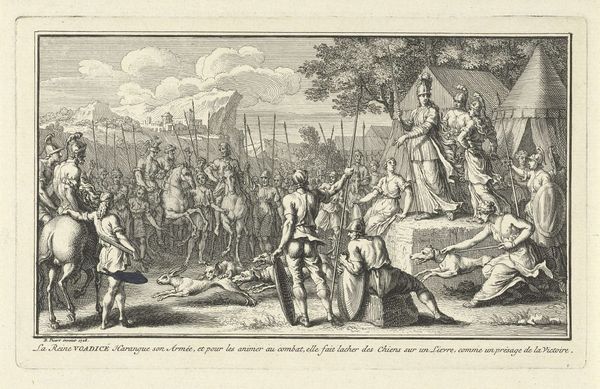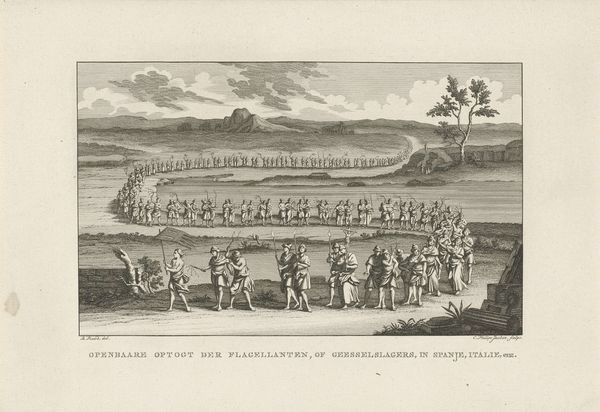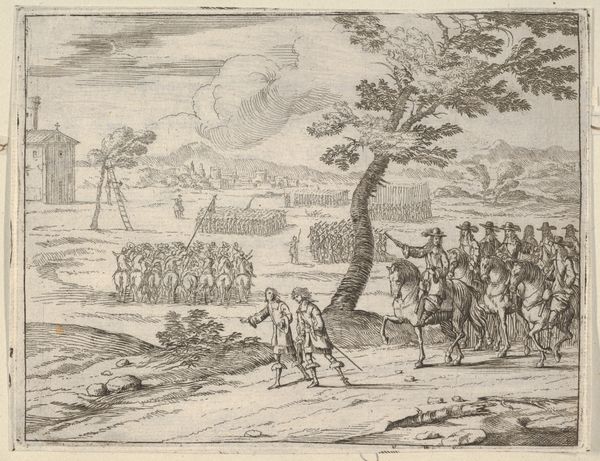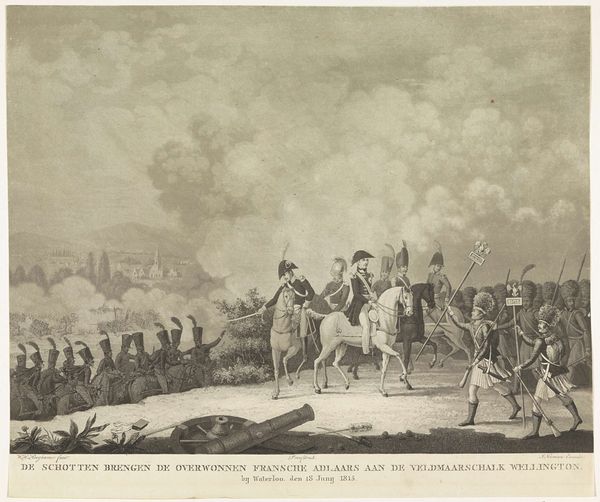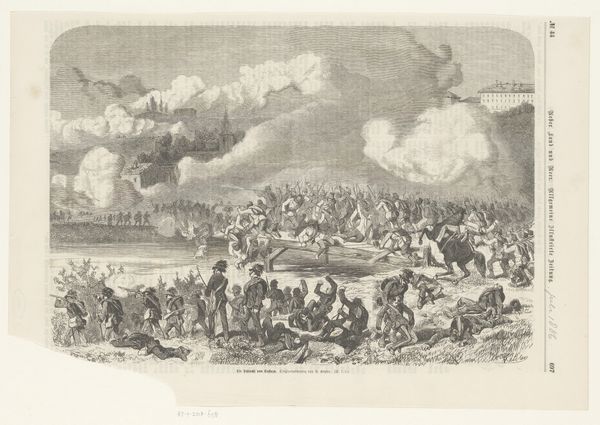
Dimensions: height 353 mm, width 383 mm
Copyright: Rijks Museum: Open Domain
This is an anonymous print from 1785, now held at the Rijksmuseum, depicting Joseph II, the Holy Roman Emperor. It was made using etching, a printmaking technique where acid is used to corrode a design into a metal plate. The image presents Joseph II in a comical light, seated on a 'fool's chair' and wearing a jester's cap. This was made in the Austrian Netherlands, now Belgium, during a time of social and political tension. Joseph II's reforms were seen as radical and disruptive, leading to widespread opposition. The print satirizes Joseph II's policies and those around him, such as state minister Belgiojoso, and Duke of Brunswick. By depicting him in such a ridiculous manner, the print challenges his authority and questions the legitimacy of his rule. The artist uses visual codes, cultural references, and historical associations to express a political message. To understand this print, we need to consider the social conditions that shaped its production, consulting historical documents and other period sources. Art serves a public role, reflecting the politics and challenging the social norms of its time.
Comments
No comments
Be the first to comment and join the conversation on the ultimate creative platform.


